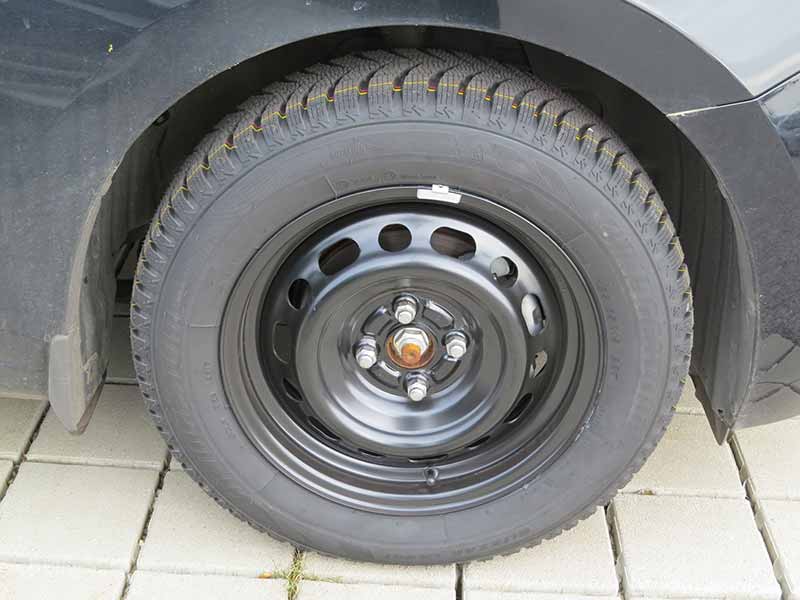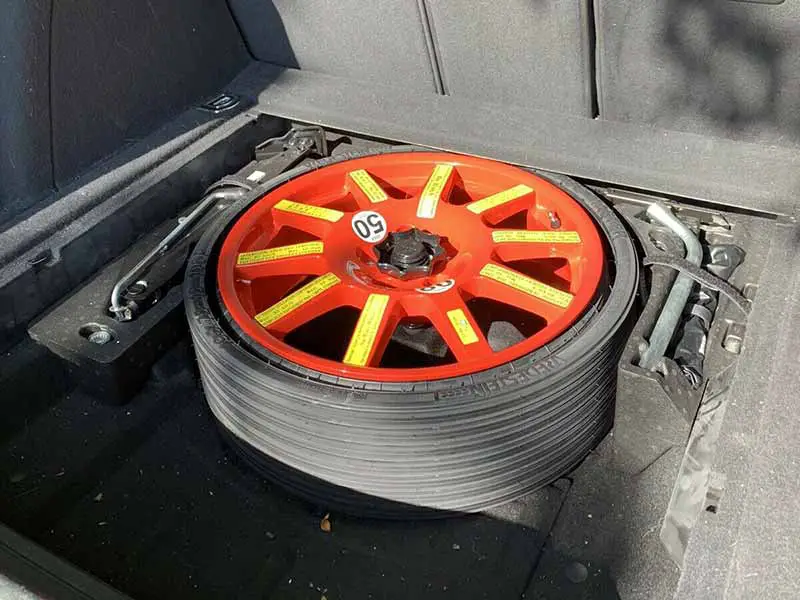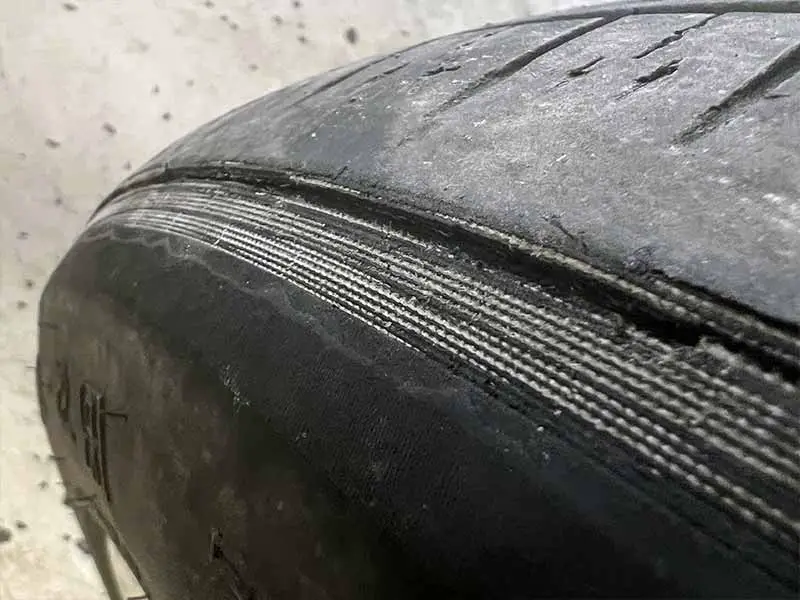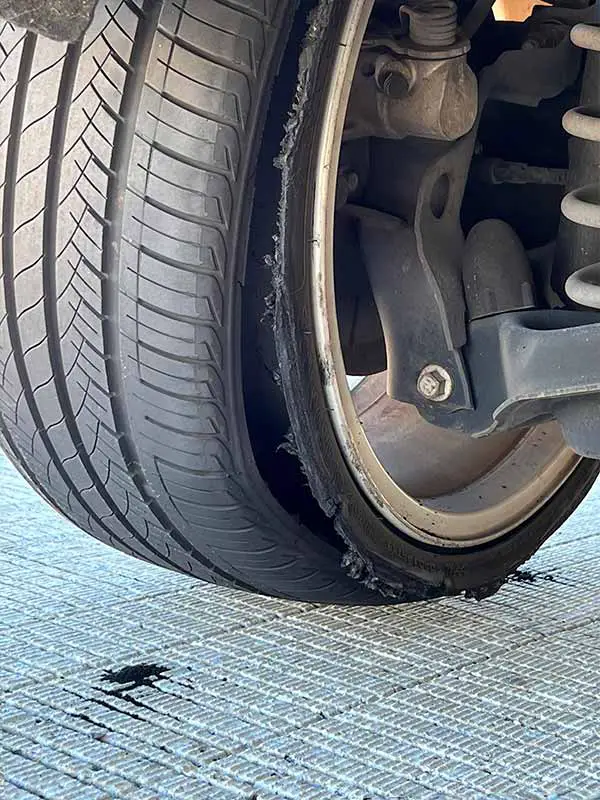A flat tire can be a frustrating experience, but having a spare tire in your car can help you get back on the road quickly. Spare tires are essential for those unexpected moments when your regular tire gets damaged or goes flat.
How Long Can You Drive On A Spare Tire?
You can drive on temporary (donut) spare tires no more than 50-70 miles because they are designed for short-term use to get you to a repair shop or service station.
For full-size spare tires, there’s no specific distance limit, but it’s best to have your flat tire repaired or replaced as soon as possible to avoid uneven wear on your other tires and potential handling issues.
Always drive cautiously when using a spare tire and replace it with a regular tire as soon as you can.
In this article, we will cover the basics of spare tires, the different types available, and provide guidance on how long and fast you can drive on a spare tire.
Let’s take a closer look.

Temporary Vs Full-Size Spare Tire
Here’s a quick look at the differences between these two types of spares and how they can affect your driving.
Full-size spare tires are the same size as your car’s regular tires. They’re often found in trucks and SUVs. One of the benefits of a full-size spare tire is that you can drive on it for a longer time than a donut spare tire. You can also drive at normal highway speeds when using a full-size spare. However, it’s still best to have your flat tire repaired or replaced as soon as possible.
Temporary donut spare tires, on the other hand, are smaller and lighter than regular tires. They’re designed to be used for a short time just to get you to a repair shop or service station. When driving on a donut spare tire, you should keep your speed below 50 miles per hour. Going faster could damage the spare tire or your car. Donut spare tires are also meant for short distances, usually no more than 50-70 miles.
There are some important things to remember when choosing between a full-size and a donut spare tire. Full-size spare tires take up more space and weigh more than donut spares, which can be a concern for some drivers. Donut spares are easier to store and carry, but they have more limitations on speed and distance.

How Fast Is It Safe To Drive On Temporary And Full-Size Spare Tires?
Temporary spare tires, also called donut spare tires, are smaller and lighter than regular tires. They’re designed for short-term use, just to get you to a repair shop or service station. When driving with a donut spare tire, it’s important to keep your speed below 50 miles per hour. Driving faster than this could cause damage to the spare tire or your car. Remember that donut spare tires are meant for short distances, usually no more than 50-70 miles.
Full-size spare tires are the same size as your car’s regular tires, so they can handle higher speeds. When using a full-size spare tire, you can typically drive at normal highway speeds. However, it’s still a good idea to be cautious and avoid driving at very high speeds if possible. Even though full-size spare tires can handle more normal driving, it’s best to have your flat tire repaired or replaced as soon as you can.

What Happens If You Drive Too Fast On A Spare Tire?
If you drive too fast on a temporary (or donut) spare tire, you might damage the tire or your car. Donut spare tires are smaller and not as strong as regular tires, so they can’t handle high speeds.
Driving faster than the recommended speed of 50 miles per hour could cause the spare tire to wear out quickly or even burst. It’s also possible that driving too fast on a donut spare tire can damage parts of your car, like the brakes, suspension, or wheel bearings.
How Long Is It Safe To Drive On Temporary And Full-Size Spare Tires?
Donut spares are made to help you get to a repair shop or service station when you have a flat tire. Since donut spare tires are designed for short-term use, it’s best to drive only a limited distance with them. Usually, you can safely drive about 50-70 miles on a temporary tire. Driving farther than this could cause damage to the tire or your car or truck.
Full-size spares can be used for a longer time. However, it’s still a good idea to have your flat tire repaired or replaced as soon as you can. While there’s no specific distance limit for full-size spare tires, it’s best not to rely on them for an extended period. Using a full-size spare tire for too long can cause uneven wear on your other tires and may affect your car’s handling and performance.

What Happens If You Drive Too Long On A Spare Tire?
Driving for many miles on a donut spare tire could cause it to wear out or even fail, leaving you with another flat tire. This could also damage parts of your car, like the brakes, suspension, or wheel bearings.
Using a full-size spare tire for a long time can also cause problems. While full-size spare tires are the same size as your regular tires, they might not be an exact match. Driving for an extended period on a mismatched tire could cause uneven wear on your other tires, which might affect your car’s handling and performance. This can also put extra stress on your car’s differential, transmission, or other drivetrain components, leading to damage over time.
Spare Tire Care
Check the air pressure in your spare tire regularly, just like you do for your other tires. You can find the correct air pressure for your spare tire in your car’s owner’s manual or on a sticker inside the driver’s side door. Use a tire pressure gauge to make sure your spare tire has enough air. If the pressure is too low, add air until it reaches the right level.
Look at the spare tire for any signs of damage. Check for cuts, cracks, or bulges on the tire’s surface. If you see any damage, it’s important to get it fixed or replaced. A damaged spare tire might not work well when you need it the most.
Remember to rotate your spare tire if it’s a full-size spare. Rotating your tires helps them wear evenly and last longer. Include the spare tire in your tire rotation schedule to keep it in good condition.
Driving Tips
Driving with a spare tire can be different than driving with your regular tires. Here are some helpful tips to keep in mind when you’re using a spare tire, so you can stay safe on the road.
- Remember to drive at a slower speed when you have a spare tire on your car. If you’re using a donut spare tire, you should keep your speed below 50 miles per hour. Driving faster could cause damage to the spare tire or your car. If you have a full-size spare tire, you can usually drive at normal highway speeds, but it’s still a good idea to be careful and avoid going too fast.
- Be extra cautious when turning, braking, and accelerating. Spare tires, especially donut spares, can make your car handle differently. Try to make smooth, gentle turns and avoid making sudden movements. Brake gradually, and avoid slamming on the brakes. When you need to speed up, do it gently to keep the spare tire from getting damaged.
- Avoid driving long distances on your spare. Donut spare tires are meant for short distances, usually no more than 50-70 miles. Driving further could cause problems for your car. If you’re using a full-size spare tire, it’s still best to get your regular tire repaired or replaced as soon as possible.
- Always pay attention to the road and be aware of your surroundings. Other drivers might not realize you’re using a spare tire, so it’s important to stay focused and be ready to react if needed.
By following these driving tips, you can stay safe while using a spare tire. Remember to drive slowly and carefully, and get your regular tire fixed or replaced as soon as you can.
Resources
Below are some links you may find helpful when learning about tires
- Five things you should know about your spare tire – Autoblog
- How far can you drive on a spare tire – Get Jerry
Final Thoughts
Understanding the different types of spare tires, as well as the speed and distance limits for each, is essential for safe driving. By knowing the limitations of your spare tire, you can confidently navigate unexpected flat tire situations.
Regular tire inspections and proper spare tire care will help ensure that you’re prepared when the need arises. Remember to drive gently and cautiously while using a spare tire to avoid any further issues. With this knowledge in hand, you can now confidently face any spare tire challenges that may come your way.
Good luck and happy motoring.





